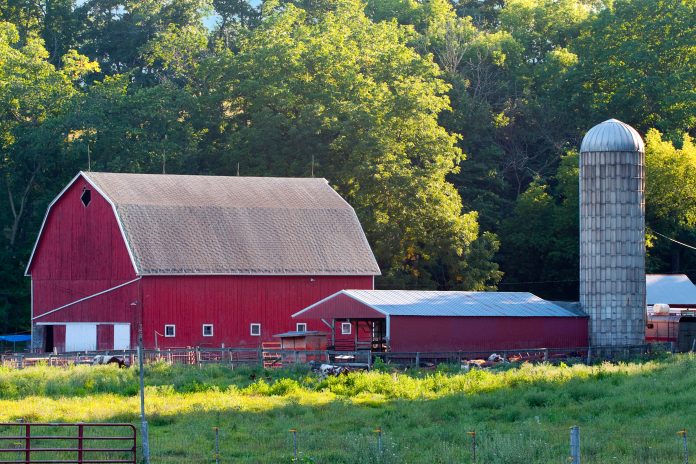The past year has had a major impact on local and sustainable agriculture, but it has also created opportunities for a renewed focus on local food and on relationship building, according to speakers at the Ohio Ecological Food and Farming Association’s annual conference Feb. 10-15.
Adrienne Williams, organizer for Growing and Growth Collective, in Franklin County, said in a Feb. 15 panel that 2020 was a challenging year, but also a year to mobilize. In 2020, the urban agriculture collective connected with more growers, and discussed inequities in food systems.
Drausin Wulsin, of Grassroots Farm and Foods, in Pike County, said 2020 turned his farm upside down. He relied heavily on farmers markets and had to shift to other sales methods.
Dave Sokoll, of the Oberlin Food Hub, in Lorain County, said the year has been all about partnerships, as the pandemic got more food hubs working together.
As the pandemic, political divides and other challenges persist, farmers, scientists and advocates discussed ways for farms and food systems to adapt, heal and grow.
Policy
In a Feb. 12 recorded message, U.S. Sen. Sherrod Brown (D-Ohio) said he sees opportunities to invest more in sustainable agriculture through policies. The pandemic has shown vulnerabilities in the food system, he said, and he wants to see more investment in rural communities and resilience for farmers and consumers.
“In many ways, the pandemic has been the great revealer,” Brown said.
Jonathan McCracken, a legislative assistant for Brown, expects to see a different approach to organic labeling and organic farming in general from the new administration. While the previous administration wasn’t necessarily hostile to organic markets, he added, they didn’t have much of a focus on it.
Brown also mentioned rebuilding and reforming USDA programs, including programs for new and beginning farmers, fighting consolidation in agriculture and addressing climate change and racial economic injustice as other priorities.
Navina Khanna, of HEAL Food Alliance, a national organization with 55 member groups, referenced the political divides the country and world are facing in her Feb. 14 keynote. She wants to see relationships between people and with the land help center how people respond to those divides.
The U.S. food system, she said, has a history of exploitation.
“We’re all hurt by it,” she said. “It’s up to all of us to change it.”
People are all part of an ecosystem, she said, and the best way to help a damaged ecosystem heal is to connect it to more of itself. By prioritizing life over profit or power and working together, Khanna believes people can make the food system healthier and more just.
Regenerative ag
Will Harris, of White Oak Pastures, in Bluffton, Georgia, is the fourth generation on his farm, and around the mid-1990s, he began transitioning from a conventional system to a more regenerative system, he said in a Feb. 10 keynote.
He noticed differences between his fields, and the edge of his woods. The dirt in the fields was a mineral material, with little life. The soil by the woods was teeming with life. He wanted his fields to look like that. So, he stopped using things like chemical fertilizers and pesticides and started moving to a more organic system.
Harris started raising and marketing his beef as grass fed, seeing an opportunity in that market, but slaughterhouses around him didn’t have enough capacity. So, over the next few years, he borrowed $7.5 million to build his own processing infrastructure.
“The choices and changes we made … were very, very intentional,” Harris said.
The impacts on the local community, however, were unintentional. Bluffton, Georgia, only had about 100 residents. Today, White Oak Pastures is the largest employer in the county, with 176 employees. That influx of people brought a need for homes, a store and a restaurant. So now, he said, Bluffton has gone from a ghost town, to a little destination.
It’s not all easy. Margins are thin, and there are less safety nets in place than for industrial systems, he said. But he’s happy with how things have worked out so far.
“The other way was much harder,” he said. “And this way is much more pleasant.”
Soil
Part of a healthy food system is healthy soil, said Elaine Ingham, soil biologist and founder of Dr. Elaine’s Soil Food Web School, in her Feb. 13 keynote. There’s a big difference between soil and dirt, she added. Dirt is the mineral part of soil. If the organisms in soil biomes have been killed off, you have dirt, and there isn’t much you can to do help it except get those microorganisms back into it.
When there is enough organic matter in soil, plants can get the nutrients they need from the soil, and are more protected from disease. To keep soil healthy, she suggests growing your own compost, so it gets local species of those microorganisms that are suited for your area, and growing perennial plants to cover the soil.
Awards
OEFFA recognized Jan Dawson and Andy Reinhart, of Jandy’s Farm, in Logan County, with the Stewardship Award. They have been farming together since 1988 and are founding vendors at the Logan County Farmers Market.
Steve Edwards, of Lebanon, Ohio, received the Service Award. He is a long time leader in the organization and has been involved in crop and livestock farming since he started working on a grain and hog farm, at 12. He helped form the group’s regional and issue based chapters.












